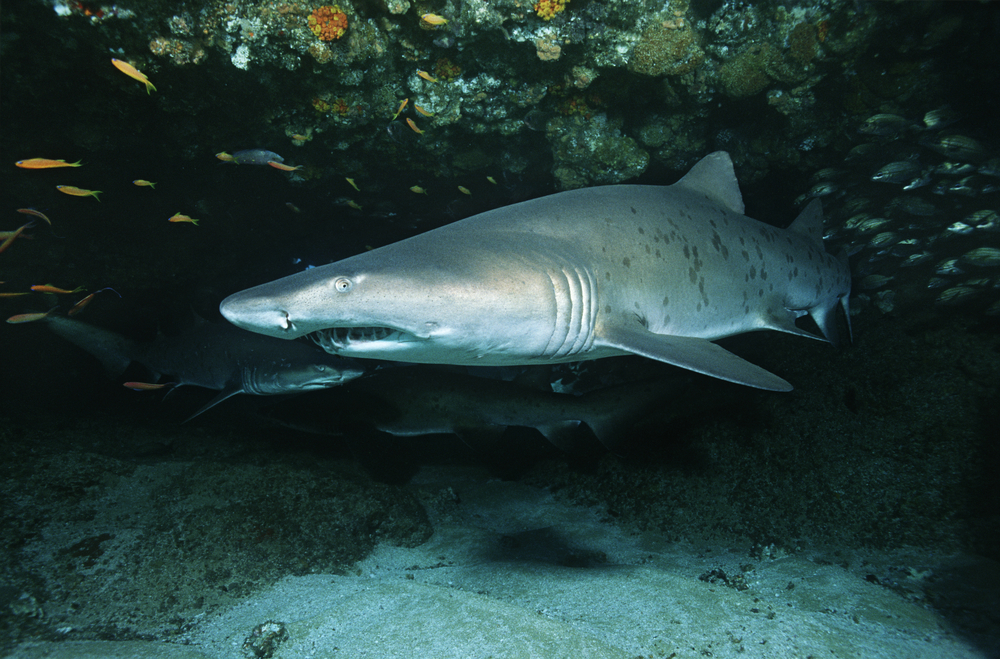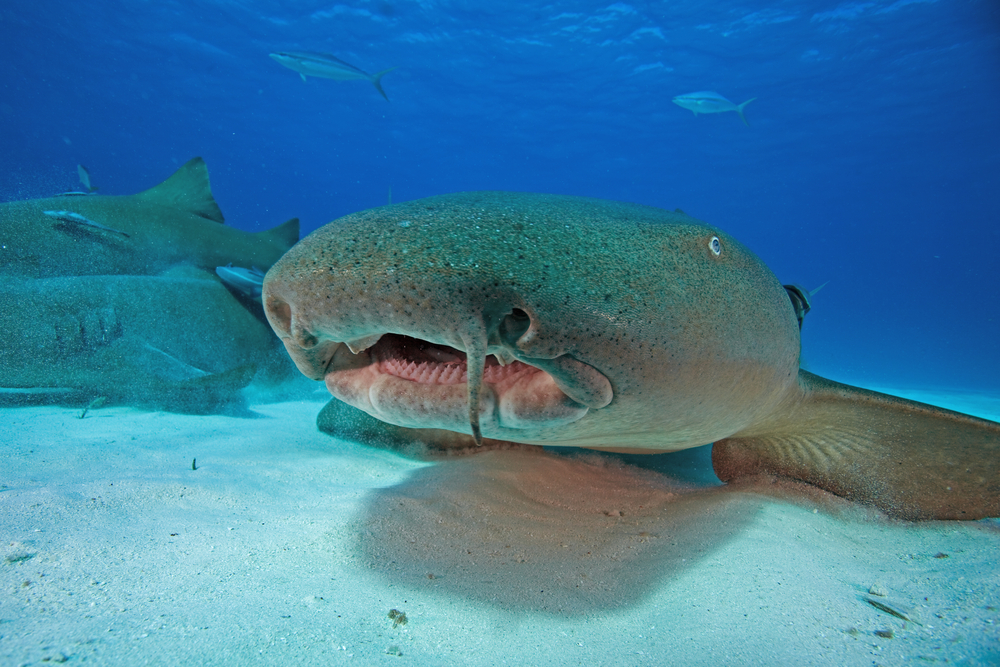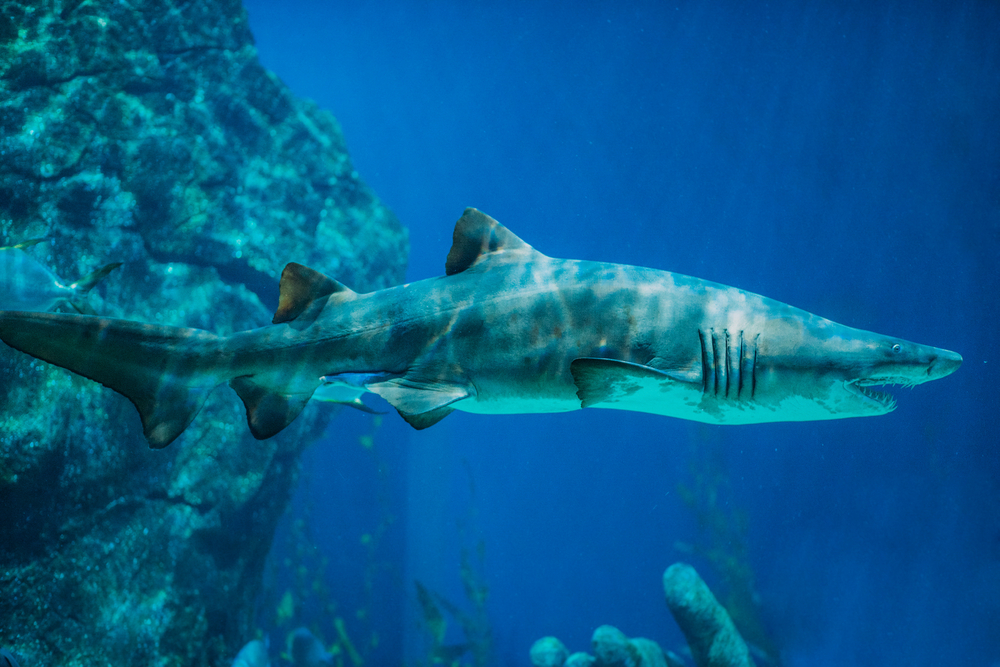Sand tiger sharks and tiger sharks are distinct species with differences in their appearance, behavior, habitat, and distribution. Here are some key differences:
- Appearance:
- Sand Tiger Shark: Sand tiger sharks (Carcharias taurus) have a distinctive appearance with a slender, elongated body and a jagged row of exposed, sharp teeth visible even when their mouths are closed. They are gray to brownish-gray with dark spots on their back and sides. Their long snout and needle-like teeth are unique features.
- Tiger Shark: Tiger sharks (Galeocerdo cuvier) are larger and bulkier than sand tiger sharks. They have a mottled appearance with dark vertical stripes or blotches on a lighter background, resembling the pattern of a tiger’s stripes. Tiger sharks have large, serrated teeth, but they are not as visible when the mouth is closed as in sand tiger sharks.
- Behavior:
- Sand Tiger Shark: Sand tiger sharks are generally less aggressive toward humans. They are known for their calm demeanor and may even appear docile at times. However, they can be territorial and might react defensively when provoked.
- Tiger Shark: Tiger sharks are considered one of the “Big Three” aggressive shark species (along with great white sharks and bull sharks). They are known for their scavenging behavior and have a reputation for being more aggressive and dangerous to humans.
- Habitat:
- Sand Tiger Shark: Sand tiger sharks are often found in coastal and offshore waters, favoring temperate and subtropical regions. They tend to inhabit rocky reefs, shipwrecks, and other underwater structures.
- Tiger Shark: Tiger sharks have a wider distribution and can be found in tropical and subtropical waters around the world. They are often encountered near the coastline but can venture into open ocean and deep waters.
- Diet:
- Sand Tiger Shark: Sand tiger sharks primarily feed on a diet of smaller fish, rays, and occasionally squid. They are known for intrauterine cannibalism, where the largest embryos consume their siblings before birth, ensuring their survival.
- Tiger Shark: Tiger sharks have a diverse diet and are often referred to as “garbage cans of the sea” due to their willingness to eat almost anything. Their diet can include fish, seals, sea turtles, birds, other sharks, and even debris.
- Conservation Status:
- Sand Tiger Shark: Sand tiger sharks are listed as vulnerable or endangered in some regions due to their vulnerability to fisheries and habitat degradation.
- Tiger Shark: Tiger sharks are listed as near-threatened globally, with population declines attributed to overfishing.
In summary, while both sand tiger sharks and tiger sharks are fascinating species, they have distinctive characteristics, behaviors, and habitats that set them apart. It’s essential to understand these differences when encountering these animals in their natural environments.









































































